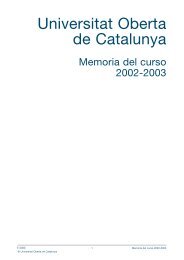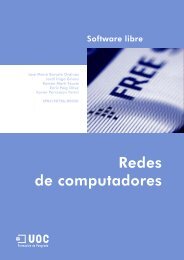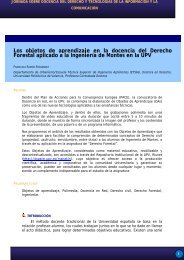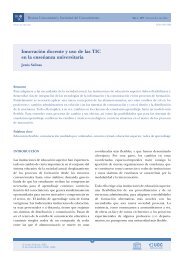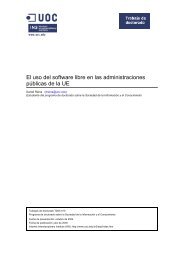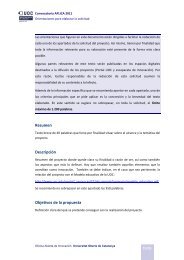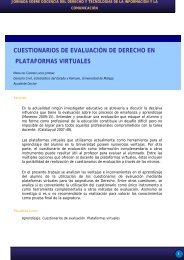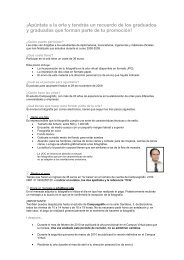e-governance and citizen information - Universitat Oberta de ...
e-governance and citizen information - Universitat Oberta de ...
e-governance and citizen information - Universitat Oberta de ...
Create successful ePaper yourself
Turn your PDF publications into a flip-book with our unique Google optimized e-Paper software.
E-<strong>governance</strong> <strong>and</strong> Citizen Information 22 Theoretical Framework. The Network Administration2.1.1. Our Conceptual PerspectiveDespite the wi<strong>de</strong> diffusion of the concept of e-government, a look at the existing bibliographyreveals the problems of trying to pin it down precisely. This problem is explained by both theproliferation of <strong>de</strong>finitions <strong>and</strong> practices inclu<strong>de</strong>d within the concept. e-Government has avariety of different <strong>de</strong>finitions, including the following:• The uses of ICTs by public administrations.• The use of ICTs to provi<strong>de</strong> public services to <strong>citizen</strong>s <strong>and</strong> companies.• The optimisation of public services <strong>and</strong> access to public <strong>information</strong> by means of ICTs• A new form of government focused on <strong>citizen</strong>s <strong>and</strong> orientated towards results• The distribution of online public services• The reduction of bureaucracy with the use of technology to improve <strong>citizen</strong>s' access tothe Administration• e-Business within government• The use of ICTs to increase Public Administrations' efficiency <strong>and</strong> efficacy• The use of ICTs in all functions of governmentIn addition, we often find use of all the following terms: e-government, e-<strong>governance</strong>,e-administration <strong>and</strong> e-<strong>de</strong>mocracy. We will start by <strong>de</strong>fining the last two. The concept ofthe e-administration emphasises the new way in which Public Administration is organised– not only in the <strong>de</strong>livery of external services <strong>and</strong> external government relationships – <strong>and</strong>how it re<strong>de</strong>signs internal processes In this sense, some of the organisational changes thataffect internal <strong>information</strong> flows, the mechanisms for the coordination of different units orhierarchical relations are highlighted (Prins, 2001). Similarly, e-<strong>de</strong>mocracy focuses on theuse of electronic communication means that h<strong>and</strong> over part of the power to <strong>citizen</strong>s to controlthe responsibility of the actions of legislators <strong>and</strong> politicians in the public sphere. Thisis achieved by strengthening of the transparency of the political process. In addition, byimproving the quality of <strong>information</strong> offered to <strong>citizen</strong>s, another aim is to facilitate the creationof opinion <strong>and</strong> encourage <strong>citizen</strong> participation <strong>de</strong>cision-making processes (Trechselet al., 2003)As regards e-government, we should make clear that there are many <strong>de</strong>finitions, <strong>and</strong> thatthey usually come from the private sector <strong>and</strong> international institutions. A common point isthe <strong>de</strong>termining weight of technology (OCDE, 2001; UN, 2001) <strong>and</strong>, in particular, the digitisationof public services <strong>and</strong> their <strong>de</strong>livery on government websites (Gartner Group, 2000;SIBIS, 2003). In parallel, many authors <strong>and</strong> companies have started to criticise the restrictedhttp://www.uoc.edu/in3/pic




